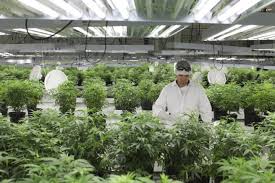Cannabis in Sector 6, Bucharest: Exploring the Culture, Legality, and Perspectives

Introduction
Sector 6 of Bucharest, known for its diverse neighborhoods, modern architecture, and cultural attractions, is a vibrant part of Romania’s capital city. It encompasses both residential and commercial areas, attracting a mix of locals and visitors. Amidst its bustling life, the conversation surrounding cannabis use and legality has gained traction, reflecting broader shifts in societal attitudes and legislative approaches toward cannabis.
This article provides a comprehensive overview of cannabis in Sector 6, exploring the legal landscape, the underground culture, public perceptions, challenges faced by users, and the potential for future reform.
1. The Legal Status of Cannabis in Romania
1.1 Overview of Cannabis Laws
Cannabis laws in Romania are strict and conservative. The country has a zero-tolerance policy toward illegal drug use, including cannabis, which is categorized as a “risk drug” under Romanian law.
- Possession: The possession of cannabis, regardless of the quantity, is illegal in Romania. The law does not define personal use, leading to uncertainty about legal thresholds. Possession can result in fines, community service, or imprisonment, particularly for repeat offenders.
- Distribution and Trafficking: Distribution of cannabis is considered a serious offense, with penalties ranging from two to ten years of imprisonment. The law does not differentiate significantly between personal and commercial quantities, which often leads to disproportionate punishments.
- Medical Cannabis: In 2013, Romania legalized medical cannabis for patients suffering from certain conditions, such as chronic pain and multiple sclerosis. However, the program is limited, with only a few approved medications available. The process for obtaining medical cannabis can be cumbersome, requiring extensive documentation and approval from health authorities.
1.2 Law Enforcement in Sector 6
As a significant urban area in Bucharest, Sector 6 experiences active law enforcement aimed at curbing drug use. Police presence is felt in various neighborhoods, especially those known for nightlife and social gatherings.
- Police Surveillance: Law enforcement agencies frequently patrol areas where cannabis use is suspected. This heightened police presence creates an atmosphere of caution among users, who may choose to consume cannabis in private settings to avoid potential encounters with the law.
- Impact on Behavior: The threat of police action influences the behavior of cannabis users in Sector 6. Many individuals prefer to use cannabis discreetly, often in private homes or secluded locations, which can inhibit open discussions about cannabis culture and community support.
2. The Underground Cannabis Culture in Sector 6
2.1 Community Dynamics on weed in Sector 6
Despite the strict legal framework, an underground cannabis culture thrives in Sector 6. This community is characterized by trust, discretion, and a shared understanding of the challenges associated with cannabis use.
- Private Gatherings: Cannabis users often convene in private settings to consume cannabis. These gatherings provide a safe space for individuals to share experiences, discuss consumption methods, and foster a sense of community.
- Trust Networks: Building trust within the cannabis community is essential. Users rely on established relationships to source cannabis, creating networks based on mutual respect. These networks allow individuals to access quality products and share valuable information about safe consumption practices.
2.2 Online Communities and Information Exchange
The internet plays a vital role in connecting cannabis users in Sector 6, providing platforms for education, information sharing, and community support on weed in Sector 6.
- Social Media Groups: Private groups on social media enable users to share experiences, discuss cannabis-related topics, and exchange information about sourcing products. These platforms allow for anonymity, fostering open dialogue without the fear of judgment.
- Educational Resources: Many online communities focus on educating users about cannabis effects, responsible consumption, and potential health benefits. This emphasis on education encourages a culture of responsible use and harm reduction, empowering users to make informed choices on weed in Sector 6.
3. Public Perception of Cannabis in Sector 6
3.1 Traditional Attitudes
Public perception of cannabis in Sector 6 reflects broader societal attitudes toward drugs in Romania. Many individuals, particularly older generations, hold conservative views regarding cannabis use.
- Stigmatization: Cannabis users often face stigma, as many associate cannabis with criminal behavior and social decline. This perception can deter individuals from openly discussing their cannabis use and hinder community engagement.
- Media Representation: Romanian media has historically portrayed cannabis negatively, emphasizing drug-related crimes and the social problems associated with drug use. This portrayal reinforces fears and perpetuates stigma, making it difficult for cannabis users to advocate for their rights and experiences on weed in Sector 6.
3.2 Shifting Perspectives
While traditional views persist, a generational divide exists regarding attitudes toward cannabis, particularly among younger individuals who are increasingly open to reevaluating cannabis’s role in society.
- Cultural Changes: The younger population, including students and young professionals, tends to view cannabis as a legitimate choice for recreation or therapeutic use. Exposure to international perspectives and legalization efforts in other countries contributes to this changing narrative on weed in Sector 6.
- Advocacy Initiatives: Local advocacy groups are emerging to promote cannabis reform and educate the public. These organizations work to challenge stereotypes, advocate for policy changes, and provide information about responsible use and health benefits associated with cannabis.
4. Challenges Facing Cannabis Users in Sector 6
Despite the growth of an underground culture and shifting perceptions, cannabis users in Sector 6 face significant challenges that complicate their experiences on weed in Sector 6.
4.1 Legal Risks
The threat of legal repercussions remains a significant barrier for cannabis users. The strict enforcement of drug laws creates an environment of fear and secrecy.
- Police Encounters: The risk of encountering law enforcement can deter individuals from using cannabis openly. Many users prefer to consume cannabis in private settings to avoid potential arrests, which can lead to a culture of silence.
- Consequences of Arrest: The potential for arrest and prosecution can discourage individuals from engaging with cannabis culture. Legal repercussions can be severe, leading to long-term consequences such as criminal records, job loss, and social stigma.
4.2 Access and Quality Control
Accessing cannabis in Sector 6 can be difficult due to its illegal status. Users often rely on the black market, which poses risks related to quality and safety.
- Black Market Risks: The absence of regulation means users have no guarantee of quality or safety when sourcing cannabis. Many individuals may encounter low-quality products or dangerous adulterants that pose health risks.
- Limited Alternatives: While CBD products are becoming more available legally in Romania, they do not provide the psychoactive effects many users seek. The lack of access to a regulated cannabis market leaves individuals turning to illegal sources, which can be both risky and inconvenient.
4.3 Social Stigma and Isolation
The stigma surrounding cannabis use creates an isolating environment for many users in Sector 6. Open discussions about cannabis are often met with judgment, making it difficult for users to connect with one another.
- Workplace Concerns: Cannabis users may fear discrimination in their professional lives, leading to self-censorship and reluctance to discuss their cannabis use, even among trusted colleagues. This can create a barrier to open conversations about cannabis in social and professional settings.
- Impact on Mental Health: The social stigma associated with cannabis can contribute to feelings of anxiety and depression among users. The pressure to conform to societal expectations may lead individuals to internalize negative views about their cannabis use.
5. The Future of Cannabis in Sector 6: Opportunities for Change
While challenges persist, there are signs of potential change regarding cannabis attitudes and policies in Sector 6. The growing interest in cannabis reform, coupled with shifting public perceptions, may pave the way for a more progressive approach.
5.1 Economic Potential
The economic implications of cannabis legalization have been recognized in various countries, and Sector 6 could potentially benefit from a similar approach.
- Cannabis Tourism: Legalizing cannabis could attract tourists interested in experiencing a cannabis-friendly environment. As tourism is a significant economic driver in Romania, Sector 6 could position itself as a destination for cannabis enthusiasts, contributing to local economic growth.
- Job Creation: A regulated cannabis market would create new job opportunities in various sectors, from cultivation to retail. This economic boost could contribute to local development and offer new avenues for employment.
5.2 Advocacy and Activism
Local advocacy groups play a crucial role in shaping the future of cannabis in Sector 6. Their efforts to educate the public and promote reform are essential in changing perceptions and policies.
- Grassroots Initiatives: Advocacy organizations often focus on grassroots initiatives that empower individuals to engage in conversations about cannabis. Community events, workshops, and public campaigns help raise awareness and challenge existing stigmas.
- Collaboration with Health Professionals: Collaborating with healthcare professionals can lend credibility to advocacy efforts. By emphasizing the potential health benefits of cannabis, activists can foster a more informed public discourse.
5.3 Influence of Global Trends
As more countries adopt progressive cannabis policies, Romanian citizens are increasingly exposed to alternative perspectives on cannabis. The influence of global trends plays a critical role in shaping public opinion and policy discussions.
- Changing Narratives: The success of cannabis reform in neighboring countries can inspire change in Romania. Observing the positive outcomes of legalization elsewhere may encourage policymakers and the public to reconsider their views on cannabis.
- Youth Engagement: The younger generation, often more accepting of cannabis use, is becoming increasingly involved in activism and political discourse. Their voices will be instrumental in driving conversations about cannabis reform and shaping the future landscape.
Conclusion
Cannabis in Sector 6 operates within a complex legal and social framework characterized by strict regulations, an underground culture, and evolving public perceptions. While users face significant challenges, including legal risks, social stigma, and limited access to quality products, there are signs of potential change on the horizon.
As advocacy efforts gain momentum and public awareness grows, the future of cannabis in Sector 6 may be
more promising than ever. The area’s vibrant culture, combined with the economic opportunities presented by cannabis reform, could pave the way for a more progressive approach to cannabis in Romania. While cannabis use remains largely underground for now, the possibility of change looms, offering hope for a more open and informed conversation about cannabis in Sector 6, Bucharest.
References
- Romania’s Drug Policy: Overview and Trends
- The Impact of Cannabis Legalization Worldwide
- Public Perception of Cannabis Use in Romania
- The Role of Advocacy in Shaping Cannabis Policy
- Economic Opportunities in Cannabis Tourism

Message Josh on = joshchris385@gmail.com.
he sorted us in style during our little vacation .
Top quality 420bud of different strains you can find around.
You won’t regret getting in touch with him . Highly recommended local plug his telegram / https://t.me/joshlegitplug
we did give it a try and the delivery guy delay like ten minutes but he finally arrived and woow the buds were so good and thank u so much josh.
His dealings are smooth and fast and his buds are so so good.

We were lucky over here Me and my crew enjoy our trip our deliveries was very safe. we ordered both Satis and Indis It was a great experience and great feeling as we mix them both and have a good time.
I contacted him on his telegram and due to security reasons he requested crypto payments which i did, about 30minutes later my dope was dropped at my requested location great guy!!! i highly recommend.
Woow…thank so much for the buds flowers I purchased 10g (this is minimal order) for $100, everything went smoothly i paid with crypto currency as first timer in the morning and tonight he accepted cash on delivery .
“Absolutely love how easy and seamless the process was! The delivery was quick, and the quality is always top-notch. You’ve earned a loyal customer!”